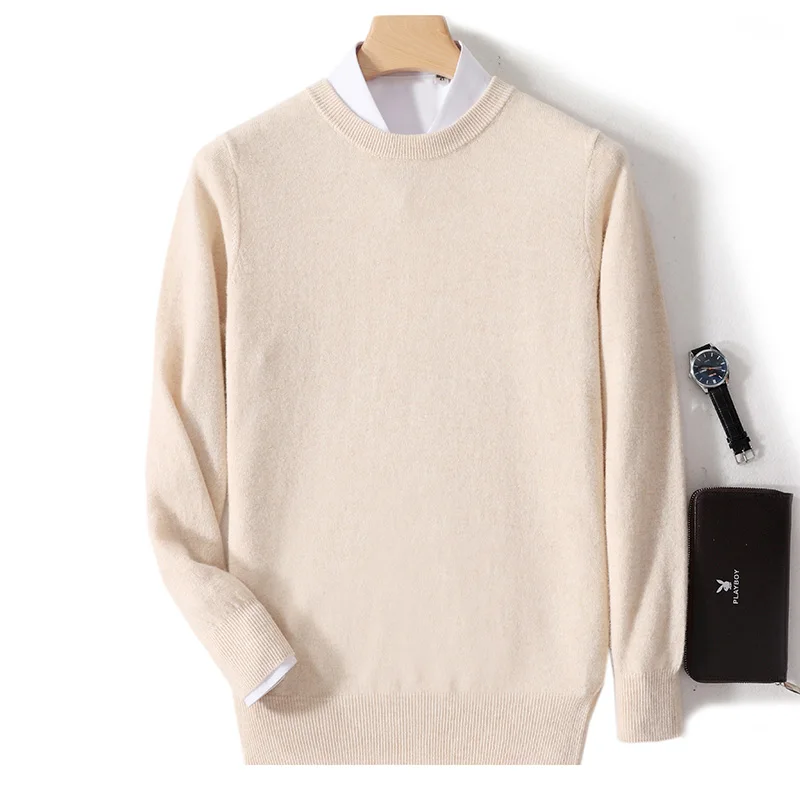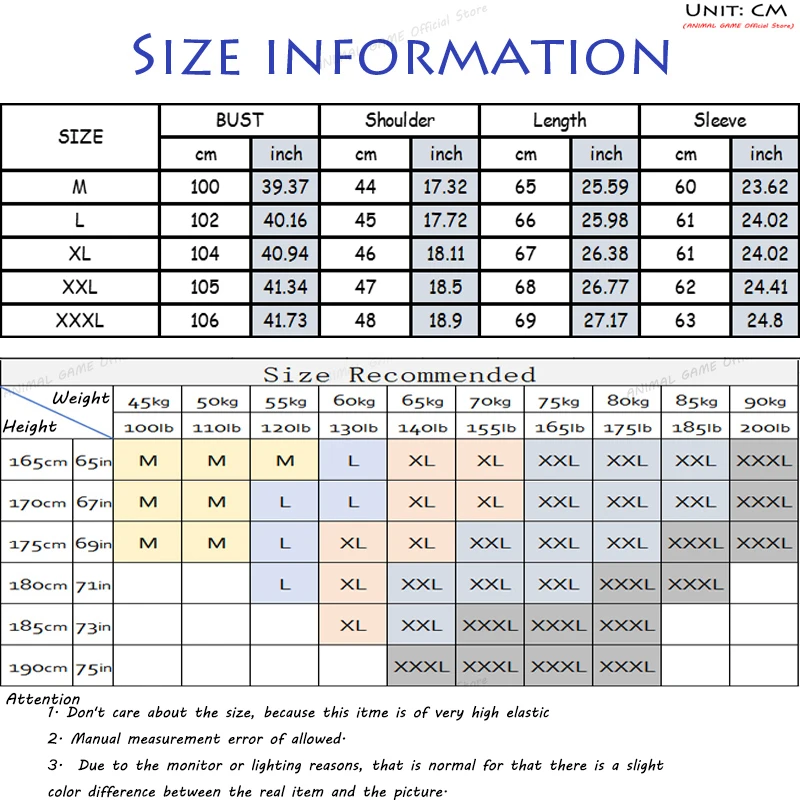What is Cashmere and Why Does it Pill?
Cashmere is a luxurious natural fiber harvested from the soft undercoat of Kashmir goats. Prized for its exceptional softness, lightweight warmth, and silky texture, true quality cashmere features incredibly fine fibers under 16 microns in diameter and exceeding 36mm in length. This premium natural material is significantly softer and lighter than regular wool while providing up to three times more insulation.
Pilling—those small, fuzzy balls that appear on the surface of cashmere garments—occurs naturally due to the structure of the fibers themselves. When cashmere fibers are subjected to friction during wear or washing, the short, fine fibers can work loose from the fabric’s surface and tangle together, forming those characteristic pills. This happens because cashmere fibers are significantly shorter and finer than other wools, making them more prone to this type of wear.
Proper washing techniques are absolutely crucial for maintaining cashmere quality and minimizing pilling. Without appropriate care, even the finest styling tips for cashmere cardigans won’t help if the garment itself looks worn and fuzzy. Understanding the fundamentals of how to stop cashmere pilling will significantly extend the lifespan and appearance of your luxury garments.
Pre-Washing Preparation: Essential Steps Before Cleaning
Properly preparing your cashmere before washing is a critical first step in preventing pilling. Taking a few minutes for these preparatory measures can make a significant difference in maintaining your garment’s quality:
Check the care label – Always begin by reading the manufacturer’s care instructions on the garment’s label. These guidelines are specifically tailored to your particular item and should take precedence if they differ from general advice.
Examine and de-pill first – Before washing, carefully inspect your garment for any existing pills. Remove these using a specialized cashmere comb or fabric shaver, working gently in one direction across the fabric surface.
Address stains immediately – For spot stains, try targeted cleaning before a full wash. Blot (don’t rub) the stain with cold water and a drop of mild detergent, working from the outside in to prevent spreading.
Turn inside out – Always turn cashmere garments inside out before washing. This simple step significantly reduces friction on the visible surface where pilling is most noticeable.
Remove surface debris – Gently shake your cashmere to remove loose particles, dust, or pet hair. For stubborn debris, use a soft-bristled clothes brush, brushing in the direction of the fibers.
Taking these preparatory steps works hand-in-hand with comprehensive ultimate guide to cashmere care practices. By properly preparing your garment before washing, you’re creating optimal conditions to minimize fiber disturbance and prevent unnecessary pilling.
Hand Washing Cashmere: The Gold Standard Method
Hand washing is widely considered the gold standard for cashmere care, offering the gentlest treatment for these delicate fibers. This method gives you complete control over the washing process, significantly reducing the mechanical agitation that causes pilling.
Step-by-Step Hand Washing Technique:
Prepare your basin – Fill a clean sink or basin with cool to lukewarm water (68-86°F/20-30°C). Never use hot water as it can damage fibers, cause shrinkage, and increase pilling.
Add appropriate detergent – Dissolve a small amount (typically 1 teaspoon) of cashmere-specific or wool wash detergent in the water before adding your garment. Baby shampoo can work as an alternative in a pinch as it’s typically gentle and pH-balanced. Avoid regular detergents which contain enzymes that break down natural proteins in cashmere.
Submerge and soak – Gently place your inside-out cashmere into the water and lightly press down to fully submerge. Allow it to soak for 5-10 minutes—no longer, as excessive soaking can weaken fibers.
Clean with minimal agitation – Instead of rubbing or wringing, gently swirl the garment in the soapy water using light, circular hand movements. Focus on areas that may need extra attention like cuffs or underarms with the lightest possible touch.
Rinse thoroughly – Drain the soapy water and refill the basin with clean, cool water. Gently press (don’t wring) the garment to release detergent. Repeat this rinse process until the water runs clear and no soap remains—residual detergent can attract dirt and cause pilling.
Hand washing allows you to provide individualized care to each cashmere piece, though there are instances when you may wonder can you machine wash cashmere safely. While hand washing is preferred, proper machine washing techniques can be acceptable in certain situations.

Machine Washing Cashmere: When and How to Do It Safely
While hand washing is ideal for cashmere care, machine washing can be appropriate in certain situations when time constraints exist or when the garment label specifically permits it. When machine washing is necessary, following these strict guidelines can help minimize pilling:
Critical Machine Settings:
- Cycle selection: Always use the delicate or wool cycle, which features minimal agitation and reduced spin speeds
- Water temperature: Set to cold wash only (maximum 86°F/30°C)—never warm or hot
- Spin speed: Select the lowest possible spin setting (400-700 RPM) to reduce mechanical stress
Essential Protective Measures:
Use protective mesh bags – Always place cashmere items in high-quality, fine-mesh laundry bags before machine washing. This creates a protective barrier that reduces direct friction against the drum and other garments.
Turn garments inside out – This simple step protects the visible surface of your cashmere from abrasion during the wash cycle.
Wash with similar items only – Never wash cashmere with rough fabrics like denim or items with zippers, buttons, or hooks that could catch and damage the delicate fibers.
Avoid overloading – Give your cashmere room to move freely in the washing machine. Overcrowding increases friction between garments and accelerates pilling.
Even with these precautions, machine washing introduces more agitation than hand washing, making it inherently riskier for delicate cashmere. For your most treasured pieces from our cashmere sweaters collection, hand washing remains the safest option for long-term care.
Drying Techniques That Preserve Cashmere Quality
Proper drying techniques are just as important as washing methods in preventing pilling and maintaining the quality of your cashmere garments. The key principle is gentle handling to avoid stretching or stressing the fibers.
Never Tumble Dry Cashmere
This bears repeating: never place cashmere in a tumble dryer, even on low heat settings. The combination of heat and mechanical tumbling will immediately damage the delicate fibers and guarantee significant pilling and potential shrinkage.
Removing Excess Water Safely:
Lift carefully – When removing wet cashmere from wash water, support the entire garment with both hands to prevent stretching under its own weight when wet.
Press between towels – Lay your cashmere flat on a clean, light-colored towel. Roll the towel with the garment inside, applying gentle pressure to absorb moisture. Never wring, twist, or squeeze cashmere when wet.
Replace the towel – For very wet garments, you may need to repeat this process with a second dry towel until the majority of moisture has been removed.
Flat Drying Methodology:
Choose the right surface – Use a mesh drying rack or clean, dry towel placed on a flat surface with good air circulation.
Reshape while damp – Gently ease the garment back to its original dimensions while still damp, paying special attention to sleeves, collars, and hems.
Position away from heat and light – Keep drying cashmere away from direct sunlight, radiators, or heating vents, as these can damage fibers and cause uneven drying.
Turn occasionally – For thick cashmere pieces, gently flip the garment after several hours to ensure even drying on both sides.
Most cashmere items will need approximately 24-48 hours to dry completely, depending on the thickness and environmental conditions. Patience during this process preserves the integrity of the fibers in your cashmere cardigans and helps prevent pilling.
Detergent Selection: What to Use and Avoid
The detergent you choose plays a crucial role in preserving your cashmere’s quality and preventing pilling. Using the wrong cleaning agents can damage fibers, strip natural oils, and accelerate wear.
Ideal Cashmere Washing Agents:
| Recommended | Why It Works | Avoid | Why It’s Harmful |
|---|---|---|---|
| Cashmere/wool-specific detergent | Formulated specifically for protein fibers | Regular laundry detergent | Contains harsh enzymes that break down natural fibers |
| Baby shampoo | Gentle, pH-balanced formula | Bleach & optical brighteners | Chemical damage, weakens fibers |
| Mild hair conditioner (rinse only) | Helps maintain softness | Fabric softeners | Coats fibers, increases pilling |
| pH-neutral soap | Gentle on natural fibers | Biological detergents | Enzymes digest protein fibers |
| High-alkaline products | Damages fiber structure |
Proper Detergent Usage:
Always dilute your chosen detergent in water before your cashmere comes into contact with it. Direct application of even gentle detergents can cause spotting or localized damage to fibers. For most hand washing, approximately one teaspoon of specialized wool wash in a basin of water is sufficient.
For those who enjoy styling cashmere cardigan versatile looks, proper detergent selection ensures your investment pieces remain beautiful through many wearings. Remember that residual detergent left in fibers can attract dirt and increase friction, so thorough rinsing is essential to prevent pilling.

Managing and Removing Pills: Post-Wash Maintenance
Even with perfect washing techniques, some degree of pilling is natural with cashmere. Understanding how to manage and remove pills is an essential part of cashmere care.
Pills form primarily in high-friction areas where the garment rubs against itself or other surfaces—typically under the arms, along the sides, and where accessories like bags or belts make regular contact. While proper washing minimizes pilling, regular maintenance keeps your cashmere looking its best.
Effective De-Pilling Tools and Techniques:
Cashmere comb or stone – Use with gentle, short strokes in one direction, working systematically across the garment. These tools are specially designed to catch and remove pills without damaging the underlying fabric.
Electric fabric shaver – Hold the fabric taut and move the device lightly across the surface. Choose a quality shaver with adjustable height settings for different fabric thicknesses. Always use the most conservative setting first.
Manual pill removal – For delicate or thin cashmere, carefully snip larger pills with small scissors, being extremely careful not to cut the base fabric.
The good news is that pilling typically diminishes over time with proper care. This happens because the loose, shorter fibers that cause initial pilling will eventually be removed, leaving the stronger, more securely attached fibers intact. Most quality women’s cashmere cardigans will show significantly reduced pilling after several proper wash and care cycles.
Aim to de-pill your cashmere garments after washing and before storage, but avoid excessive de-pilling as aggressive or too-frequent use of even the gentlest tools can eventually weaken the fabric structure.
Long-Term Storage and Care for Cashmere Longevity
Proper storage is a crucial yet often overlooked aspect of preventing pilling in cashmere garments. How you care for your cashmere between wearings and during off-season storage directly impacts fiber integrity and longevity.
Proper Storage Techniques:
Always fold, never hang – Hanging cashmere stretches the fibers, distorting the garment’s shape and weakening the fabric structure. Fold cashmere loosely along natural seam lines, avoiding sharp creases.
Choose breathable storage – Use cotton garment bags or pillowcases rather than plastic, which can trap moisture and potentially lead to mildew. Cedar storage boxes provide both breathability and natural moth protection.
Implement moth prevention – Store clean cashmere with cedar blocks, lavender sachets, or other natural moth deterrents. Avoid mothballs, which contain harsh chemicals that can damage fibers and leave unpleasant odors.
Between-Wear Care:
Allow rest between wearings – Give cashmere at least 24 hours to “recover” between wears, allowing fibers to return to their natural state.
Air out regularly – Instead of washing after every wear, hang cashmere outside the closet for a few hours to release moisture and odors. This significantly reduces washing frequency and associated pilling.
Address spots immediately – Spot clean small marks promptly with a damp cloth rather than subjecting the entire garment to a full wash.
By extending the time between full washings and providing proper rest periods, you’ll significantly reduce mechanical stress on the fibers of your men’s cashmere cardigans and other luxury pieces, directly reducing pilling potential.

Common Cashmere Care Mistakes to Avoid
Many cashmere pilling issues stem from common care mistakes that are easily avoidable once you know what to watch for. Being aware of these pitfalls helps preserve your investment pieces for years to come.
Using hot water – Hot water damages cashmere fibers, causing them to contract, weaken, and become more susceptible to pilling. Always use cool to lukewarm water (under 86°F/30°C).
Applying harsh detergents – Regular laundry detergents contain enzymes designed to break down proteins—unfortunately, cashmere is a protein fiber. Always use cashmere-specific or gentle wool-safe cleaning products.
Aggressive handling – Wringing, twisting, or rubbing cashmere creates friction that directly causes pilling. Always handle cashmere with a gentle touch, especially when wet.
Heat exposure – Direct heat from tumble dryers, radiators, or even prolonged sunlight damages fibers and increases pilling tendency. Always air dry away from heat sources.
Hanging cashmere – This stretches the fabric, weakening fibers and distorting shape. Always fold cashmere for storage.
Ignoring care labels – Manufacturer guidelines are specifically tailored to your garment’s particular fiber blend and construction. Always check labels before washing.
Over-washing – Each wash cycle, even when done correctly, creates some degree of fiber disturbance. Only wash cashmere when truly necessary.
Improper stain treatment – Rubbing at stains pushes them deeper into fibers and creates pilling. Always blot stains gently, working from the outside in.
Using fabric softeners – These coat fibers with chemicals that can increase friction between fibers and accelerate pilling. Never use with cashmere.
Storing dirty cashmere – Body oils, perfumes, and invisible food particles attract moths and can permanently set into fibers. Always store cashmere clean.
Our collection of cashmere turtlenecks and other premium pieces will maintain their luxurious feel much longer when these common pitfalls are avoided.
Cashmere Wrap Sweaters, Women's Cashmere Pullovers
$75.89 Select options This product has multiple variants. The options may be chosen on the product pageCashmere Cable Knit Sweaters, Women's Cashmere Pullovers
Price range: $111.82 through $112.93 Select options This product has multiple variants. The options may be chosen on the product pageCropped Cashmere Sweaters, Women's Cashmere Pullovers
$155.77 Select options This product has multiple variants. The options may be chosen on the product page- Price range: $102.02 through $109.37 Select options This product has multiple variants. The options may be chosen on the product page
Oversized Cashmere Sweaters, Plus Size Cashmere Sweaters, Women's V-Neck Cashmere Sweaters
$136.87 Select options This product has multiple variants. The options may be chosen on the product page- Price range: $108.11 through $130.03 Select options This product has multiple variants. The options may be chosen on the product page
When to Consider Professional Cleaning
While proper home care is sufficient for most cashmere maintenance, certain situations may call for professional cleaning services from specialists experienced with luxury fibers.
Consider Professional Cleaning When:
- Dealing with severe or set-in stains – Particularly oil-based stains, wine, or other difficult substances that home methods haven’t successfully removed
- Cleaning vintage or heirloom cashmere – Older fibers may require specialized handling
- Addressing odors that won’t release – Persistent smoke or other strong odors sometimes need professional treatment
- Cleaning heavily embellished pieces – Items with beading, sequins, or delicate trimming
Selecting a Quality Dry Cleaner:
- Ask specifically about their experience with cashmere and fine wools
- Inquire about which cleaning solvents they use (gentler alternatives are preferable)
- Request that they use pressing cloths and lower heat when finishing
- Consider requesting wet cleaning rather than traditional dry cleaning where available
Even with professional cleaning, limit the frequency to preserve fiber integrity. Most quality cashmere should only require professional cleaning once per season at most, with spot cleaning and proper home care handling day-to-day maintenance.
After professional cleaning, follow the same careful storage practices to maintain the refreshed condition of your garment. Exploring 15 stylish ways to wear cashmere cardigans is more rewarding when your garments remain in pristine condition.
Quick Reference: Cashmere Washing Cheat Sheet
Use this quick reference guide when caring for your cashmere to prevent pilling and maintain quality:
Essential Washing Guidelines:
| Care Aspect | Do | Don’t |
|---|---|---|
| Water Temperature | Cool to lukewarm (max 86°F/30°C) | Hot water (damages fibers) |
| Detergent | Wool-specific, pH-neutral, baby shampoo | Regular detergents, fabric softeners, bleach |
| Washing Method | Hand wash gently | Aggressive agitation, wringing |
| Drying | Flat on towel, reshape when damp | Tumble dry, wring, hang |
| Storage | Fold in breathable containers | Hang, store dirty, use plastic bags |
Emergency Stain Response:
- Blot (don’t rub) immediately with clean white cloth
- For water-based stains: blot with cold water and mild detergent solution
- For oil-based stains: apply small amount of baby powder to absorb oil before cleaning
- Always test cleaning solutions on an inconspicuous area first
Learning effective cashmere cleaning tips to avoid shrinkage complements these pilling prevention techniques, ensuring your luxury garments remain beautiful for years to come.
With these guidelines from Estate Cloth, you’ll be able to enjoy your premium cashmere pieces for many seasons, maintaining their luxurious feel and elegant appearance through proper care.







